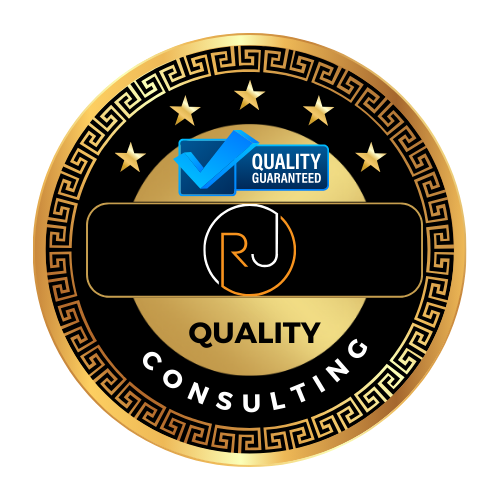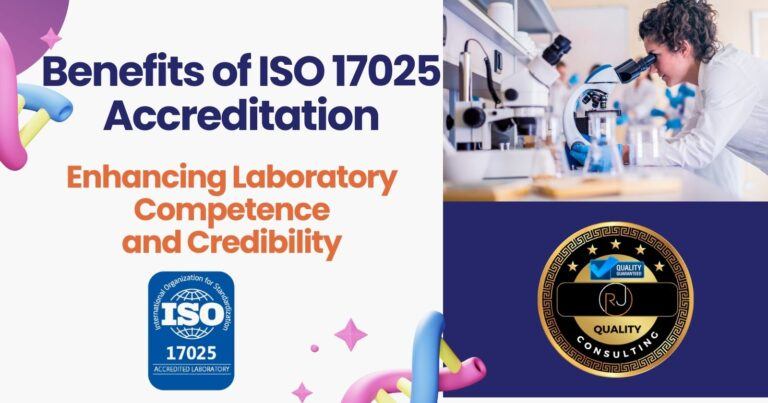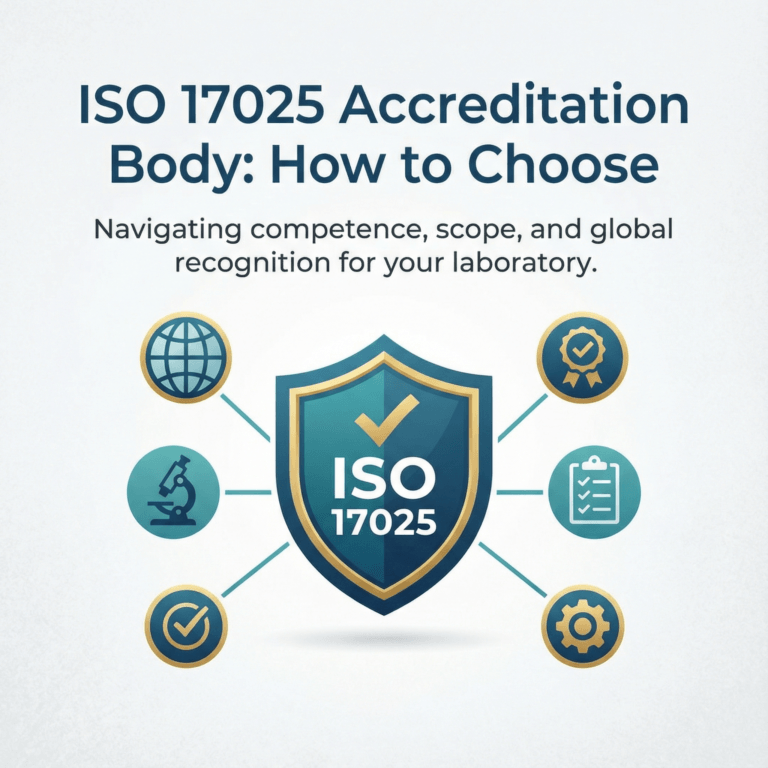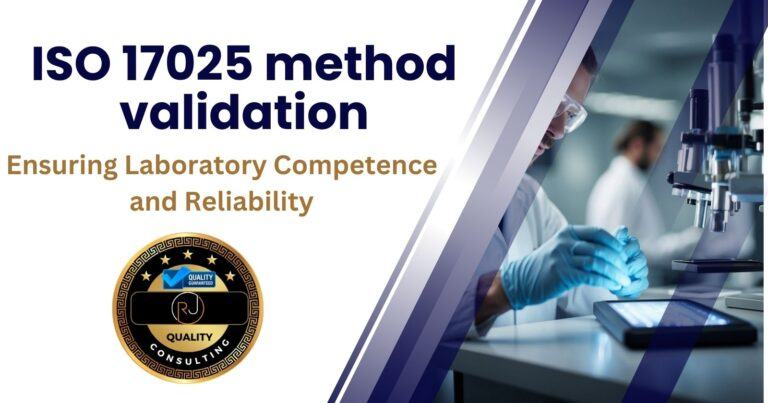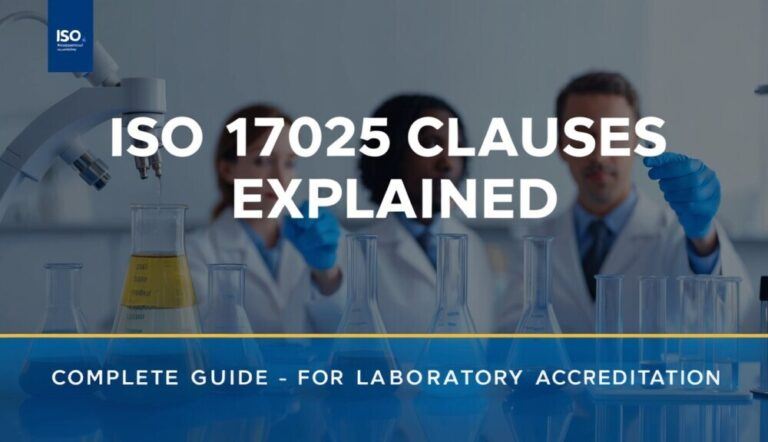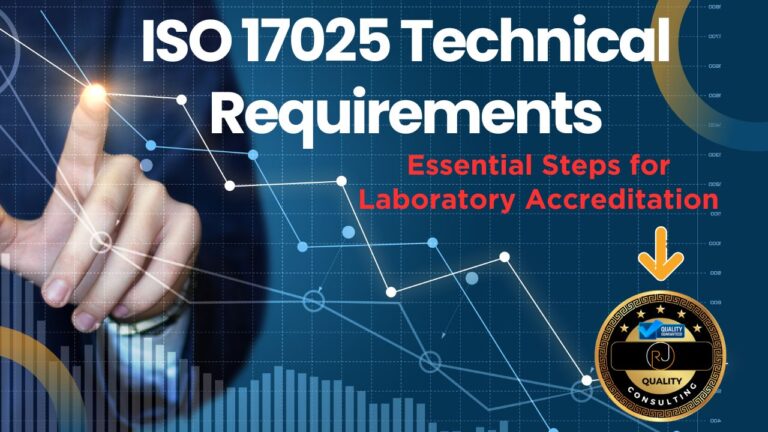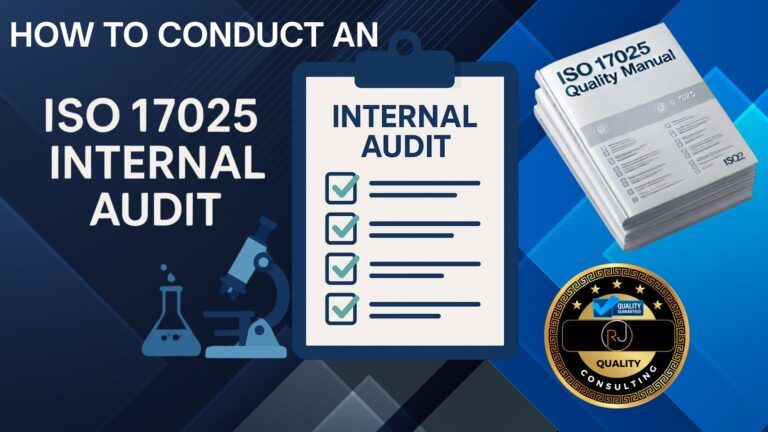ISO 17025 Risks and Opportunities Template: Streamlining Laboratory Quality Management
I have had a number of requests from my readers concerning examples of risk and opportunities. Many of you have requested a template. In this post I will provide an audit passing ISO 17025 Risks and Opportunities Template that you can use to document your risks and opportunities. In addition, the video below will discuss how to use this template.
As many of you know, navigating the complexities of maintaining high-quality lab operations can be challenging. This is where ISO 17025 becomes essential. ISO 17025 provides a structured approach to identifying and managing risks, ensuring that your laboratory remains compliant and efficient. By using an ISO 17025 risks and opportunities template, you’ll gain a framework that helps you pinpoint potential problems and capitalize on opportunities for improvement.

ISO 17025 Risk Management involves both assessing possible threats and recognizing areas for improvement. Effective risk management helps ensure that your lab maintains high standards, reduces uncertainties, and meets regulatory requirements. A well-crafted risks and opportunities template will guide you through this process, making it easier to address issues before they escalate, and ensures you have documented evidence of meeting the requirements found in section 8.5 of the ISO/IEC 17025:1027 standard.
Using these types of templates streamlines the process of documenting your risk assessments and corrective actions. They help to maintain a coherent management system that integrates seamlessly with your lab’s daily activities. Incorporating such a template into your quality management system promotes consistency and helps you to stay on top of compliance, ultimately enhancing the credibility of your lab.
Key Takeaways
ISO/IEC 17025 Implementation Masterclass
Complete documentation + step-by-step training to get your lab accreditation-ready with confidence.
What you get (features)
- Customizable Quality Manual aligned to ISO/IEC 17025
- All required policies & procedures with matching forms/templates
- 7 training modules (Clauses 4–8, internal audit & management review)
- 20-question quiz + certificate of completion
- Clear instructions on tailoring documents to your lab
Why it matters (benefits)
- Implement faster with proven, audit-ready templates
- Train your team consistently and reduce nonconformities
- Show competence to assessors with documented training & certificate
- Confidently prepare for internal & external audits
- Move from “paper compliance” to a working quality system
- ISO 17025 templates help manage lab risks and opportunities effectively.
- Risk assessment is crucial for maintaining high standards and compliance.
- Templates streamline documenting risks and corrective actions.
ISO 17025 Risks and Opportunities Template Video
To help you get a good understanding of how to get my free ISO 17025 Risks and Opportunities Template watch the video below. It will also discuss how to use this template to meet the requirements of both section 4.1 and section 8.5. Section 4.1 talks about risk to impartiality and section 8.5 talks about addressing Risks and Opportunities. I will cover both of these sections in the video. I have also included a link for you to download my free ISO 17025 Risks and Opportunities Template under the video itself. Enjoy!
Understanding ISO/IEC 17025:2017
ISO/IEC 17025:2017 focuses on the competencies and consistent operations of laboratories. It covers quality management, technical requirements, and continuous improvement in accordance with international standards. Learning how to implement ISO 17025 is key to understanding its positive impact to your laboratory’s overall accuracy and effectiveness.
Scope of ISO 17025
ISO/IEC 17025 is intended for laboratories that need to demonstrate their ability to deliver valid results. It includes both testing and calibration laboratories. The scope encompasses areas such as quality management systems, technical methods, and procedural guidelines. Accreditation to this standard ensures that your laboratory meets specific technical and managerial requirements, which helps in gaining customer trust and compliance with regulatory and market needs.
Comparison With ISO 9001 and ISO 14001
While ISO 9001 focuses on overall quality management systems for any organization, ISO/IEC 17025 is specific to laboratories. It addresses both the management and technical aspects necessary for ensuring accuracy and reliability in laboratory testing, sampling and calibration. ISO 14001, on the other hand, deals with environmental management systems. All three standards aim at continuous improvement, but ISO/IEC 17025 places a stronger emphasis on competency in laboratory operations, measurement accuracy, and reproducibility of results.
Requirement for Continuous Improvement
Continuous improvement is a key requirement of ISO/IEC 17025. This involves regular reviews and updates of procedures, equipment, and training to keep pace with technological advancements and market demands. You must introduce corrective actions to address non-conformities and optimize processes steadily. Senior management plays an essential role in fostering a culture of quality and improvement by allocating necessary resources and encouraging employee involvement. This ensures ongoing compliance and enhances the laboratory’s performance and reliability.
Not only that, but it is my professional opinion that if your Quality Management System is used properly, a business should be able to increase their bottom line by utilizing Risk and Opportunities associated with the laboratory’s activities. Especially if the lab seriously discusses these issues during the ISO 17025 Managment Review. This leads us right to the next section, risk assessment and management.
Risk Assessment and Management

Understanding and managing risks are essential for maintaining laboratory competence. This process includes identifying potential risks, evaluating their impact, and creating strategies to mitigate these risks effectively. Here, we explore various methods and tools to help laboratories develop a robust risk management process.
Developing a Risk Assessment Process
To begin, you’ll need to identify all possible risks associated with your laboratory activities. This includes both positive and negative risks, often referred to as risks and opportunities.
Using a mix of qualitative and quantitative assessments can help capture the full scope of potential risks. While a qualitative assessment might involve team discussions and expert opinions, a quantitative assessment can include statistical analysis and historical data.
Risk-based thinking is central to ISO 17025. You should ensure that preventive action is integrated into your workflow to preclude potential problems before they arise. Regular monitoring and updating of the identified risks and their mitigation strategies ensure that your process stays relevant and effective.
Utilizing SWOT and PESTLE Analyses
One practical approach to risk assessment is performing SWOT analyses. SWOT stands for Strengths, Weaknesses, Opportunities, and Threats. This tool helps you understand internal and external factors that could affect your laboratory’s performance.
Another useful method is PESTLE analysis, which considers Political, Economic, Social, Technological, Legal, and Environmental factors. This broader perspective can provide insights that are often missed with internal-only analyses.
By combining these analyses, you get a comprehensive view that helps in identifying risks and opportunities. Consider creating a matrix to map out the identified elements, which can be a handy reference for risk management in the laboratory and strategic planning.
Creation of a Risk Register
Once you have identified and assessed the risks, creating a Risk Register is essential. This document should list each identified risk, its likelihood, potential impact, and the strategies you plan for risk mitigation.
Each entry in the Risk Register may include columns like:
- Risk Description
- Likelihood (High/Medium/Low)
- Impact (High/Medium/Low)
- Mitigation Plan
- Responsible Person
- Review Date
Updating the Risk Register regularly ensures that it remains a current and effective tool. Adopting the principles outlined in ISO 31000:2018 can also support a more systematic and structured approach to risk management. This standard offers a comprehensive framework that can help enhance your risk assessment and management efforts.
Opportunities for Improvement

Opportunities for proactive improvement can be identified and assessed to enhance your business strategy and management system, ultimately leading to better customer satisfaction.
Identification and Assessing Opportunities
To identify and assess opportunities, begin by examining your current processes and systems. Use tools like SWOT analysis (Strengths, Weaknesses, Opportunities, Threats) to pinpoint areas that can be improved.
Another effective method is gathering feedback through management reviews. These reviews provide insights from different stakeholders like employees and customers. They highlight gaps and potential areas for growth.
Once opportunities are identified, create an Opportunity Improvement Plan (OPI). This plan details actions, timelines, and responsible parties for each opportunity. Having a clear OPI helps in systematic tracking and evaluation, ensuring that improvements are realized efficiently.
Linking Opportunities to Business Strategy
Linking identified opportunities to your business strategy ensures that improvement actions align with your organization’s goals. Start by prioritizing opportunities based on their impact on overall business objectives and customer satisfaction.
Use a process approach to integrate these opportunities into your management system. This involves revisiting your strategic plans and aligning them with improvement goals. Doing so ensures that every opportunity directly contributes to your broader strategy.
Regularly updating your OPI during management reviews helps in monitoring progress. This continuous review cycle ensures that opportunities are continually aligned with evolving business priorities, leading to sustainable growth and continuous improvement.
Documents and Records

Effective management of documents and records is crucial for ISO 17025 compliance. It ensures accuracy, consistency, and traceability in laboratory operations.
Control of Documents
Control of documents ensures that all documents used are current, authorized, and correctly identified. Each document should have a unique identifier, including the date of issue or revision.
Document control steps:
- Creation: Develop procedures and templates to guide document creation.
- Review: Regularly review documents to ensure they are up-to-date.
- Distribution: Clearly distribute documents to relevant personnel.
- Consistency: Maintain consistency across all documents, including the quality manual, procedures, and forms.
Record-Keeping and Traceability
Maintaining accurate records is vital for traceability and accountability. Records should be detailed enough to reconstruct the steps taken during testing and calibration processes.
Key practices:
- Templates: Use standardized templates for record creation.
- Storage: Keep records in a secure, accessible location.
- Documentation: Ensure records are complete and include necessary details like date, personnel involved, and results.
- Review: Periodically review records for accuracy and completeness.
Implications and Strategies in Laboratory Operations
Implementing ISO/IEC 17025:2017 affects various aspects of laboratory operations. You need strategies to manage risks effectively, ensure staff safety, and maintain high accuracy in testing and calibration.
Risk Management in Testing and Calibration
Managing risks in testing and calibration involves identifying potential problems and creating action plans to address them. It’s essential to document each step, from identifying risks to monitoring actions taken. The ISO/IEC 17025:2017 standard requires you to:
- List potential risks and opportunities
- Evaluate and analyze these risks
- Develop and implement action plans
Having clear procedures helps mitigate the impact of these risks on your laboratory’s performance.
Human Resources and Safety Considerations
Your staff’s well-being is crucial for smooth laboratory operations. ISO/IEC 17025:2017 emphasizes safety and the importance of having adequate resources and personnel:
- Provide regular safety training
- Ensure that all staff know emergency procedures
- Maintain equipment and facilities to prevent accidents
Monitoring these factors not only keeps your team safe but also ensures the consistent quality of your laboratory’s work.
Maintaining Integrity and Accuracy
Accuracy and integrity in testing and calibration are central to laboratory credibility. Adhering to ISO/IEC 17025:2017 helps you maintain these standards by:
- Implementing rigorous documentation for all tests and calibrations
- Regularly verifying and calibrating equipment
- Using defined methods and procedures
Frequently Asked Questions
How can I effectively implement a risk and opportunity assessment in compliance with ISO 17025?
To effectively implement a risk and opportunity assessment:
- Identify potential risks and opportunities in various lab processes.
- Document these risks and opportunities in a Risk and Opportunities Template
- Plan actions to address these risks and opportunities.
- Integrate these actions into the lab’s management system, especially Management Review.
- Continuously evaluate the effectiveness of these actions.
What are some examples of risks and opportunities in laboratory operations according to ISO 17025?
Examples of risks in laboratory operations include equipment failure, human error, and poor data management. Opportunities might involve upgrading equipment for better accuracy, enhancing staff training programs, or improving data handling processes.
Here is a practical example. Let’s say you have an older autoclave in the laboratory. You may want to ask yourself, “what would happen if this autoclave failed today?” Do you have a mitigation plan for that failure? Examples of mitigation, in this case, could be to use a different laboratory to generate your results while you fix the current autoclave. Another mitigation could be to buy a new autoclave. You get the picture.
The above example can be applied to any piece of equipment. Such as balances. How many balances do you have in the lab? If you only have one, you may consider the risks associated with only having one balance. How often is it used? Is weighing samples critical to your operation? These are questions that should be considered.
What is the required procedure for risk and opportunity management in ISO 17025?
Although there is no requirement in the standard to have a formal procedure for risk and opportunity, the standard does require that you consider risk and opportunities and that you apply them to your management system. At bare minimum, you need to document your risks and opportunities in a single document. Many labs say they do this within their corrective action process. But I believe a lab needs to be careful of simply stating that without objective evidence that you actually document risks this way.
It would, however, be a good idea to have a risk and opportunities procedure. One that involves identifying risks and opportunities, planning actions to address them, implementing these actions, and evaluating their effectiveness. Actions should be proportionate to the potential impact on the lab’s quality and operations. Try to resist, just saying that you consider risks and opportunities within another procedure or process. I have given many nonconformities to labs who say this and when I ask for objective evidence, there is none.
Which ISO 17025 clause specifies the need to determine risks and opportunities?
ISO 17025:2017 Clause 8.5 specifically requires laboratories to address risks and opportunities. This includes planning how to integrate actions to manage these factors into the lab’s management system. Another area in the standard which addresses risks is in section 4.1. Specifically, sections 4.1.4 and 4.1.5
What are the steps to complete a risk assessment for a chemical laboratory under ISO 17025:2017?
Steps for a risk assessment include:
- Identifying potential risks inherent in chemical handling, storage, and analysis.
- Assessing the likelihood and impact of these risks.
- Documenting and prioritizing risks based on their potential impact.
- Implementing measures to mitigate identified risks.
- Reviewing and updating the risk assessment regularly.
How does impartiality impact risk assessment in ISO 17025 accredited laboratories?
Impartiality ensures that the risk assessment is unbiased and objective. It is essential for the lab to avoid conflicts of interest and ensure that assessments and resultant actions maintain the integrity and objectivity needed for accurate and reliable laboratory results. Also, section 4.1.4 of impartiality specifically states “The laboratory shall identify risks to its impartiality on an on-going basis…”
🕒 Book Your Free 45-Minute Consultation
Have questions about ISO/IEC 17025 or ISO 9001 implementation or accreditation? Schedule a free 45-minute consultation with me to discuss your Company or laboratory’s needs and how we can achieve compliance together.
Schedule Your Consultation